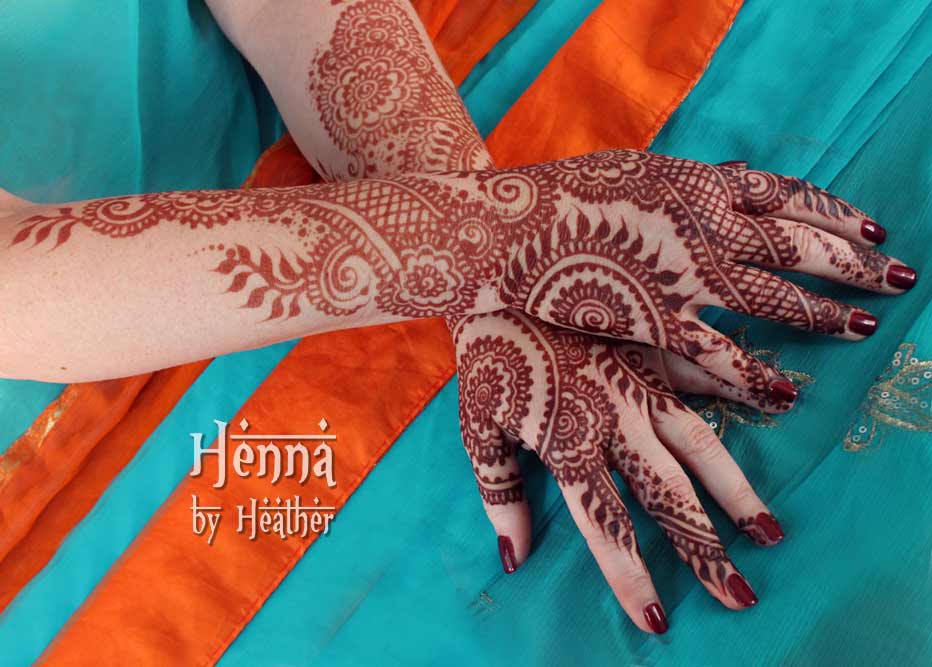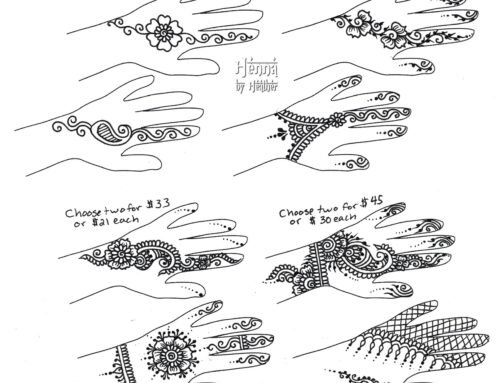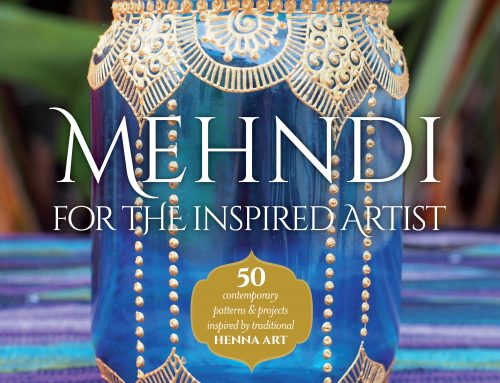This is a question that I get asked all the time by fellow henna artists, and see others asking on henna artist forums.
Usually people are asking about what specific henna powder they can buy to make it more red. And the answer to this is no – there is no henna powder that will always be redder than another. Just buy the very best henna powder you can get your hands on and proceed.
But how come you see red henna stains from others and can never seem to get them yourself?
Ah, well there, I can explain and help!
There are lots of reasons henna is redder on some people, or at some times, than others.
1. Henna on the palm is redder.
Henna on the palm of your hand (and sole of your foot) will always come out redder looking than elsewhere on the body. There are more layers of skin for the henna to dye, and the color always looks richer.
2. Henna is its reddest about 12-20 hours after paste removal.
Did your favorite henna artist post a SUPER RED photo of henna they did? Chances are that they took that photo at the absolute perfect time to show exactly that color of red, before the stain had fully darkened and matured. That same stain that looks amazingly red at 15 hours will be much more like what you’re used to seeing when it hits the 48 hour mark, for sure.
If you see your henna reaching that peak beautiful red that isn’t fully dark but you love so much, you can try to stall oxidation. Use water a lot. Put on a thiiiick layer of moisturizer so that the henna can’t really breathe (oxidize) as well.
3. Some people’s skin is magic.
Okay, well not magic, but special. It’s tough to put your finger on, but some people’s skin chemistry just means their stains will always be on the redder side. Some people hypothesize that this has to do with their circulation, or their skin pH, or antioxidant qualities of their diet. Some people who henna never really gets super crazy dark on, it hangs out at this beautiful light reddish brown forever.
So, here is your action plan:
To capture the reddest possible henna stain, start with high quality henna (like you always should). Then henna the palms of your hands or soles of your feet. Then make sure you take your photos at 15-20 or so hours – each person’s peak redness will vary, so learn when yours is. And if you ever find a friend who will model henna for you who has magic skin who it always comes out red – give them lots of free henna in exchange for always coming back to you 15-20 hours after application so that you can get optimally fabulous photos.
Robin, the model for this photo, gets beauuutifully reddish stains. She is one of those magic people. I will henna her again and again. I know I just told you not to believe that any one henna powder will do this for you more than any other, but in case you want to try using what I did because you’re not too sure about the quality of the current henna you’re using, combine the action plan above with a 50/50 Artistic Organic / Mohana blend, with Artistic Adornment’s cajeput essential oil, and lemon juice, which is what I used here. She wrapped her henna in a medical bandage overnight – lighter than an ace bandage – and then put her hand in a sock and slept with it on. She then didn’t get it wet the next morning, either. If your skin is magic and you do everything just like this, this could happen for you.




